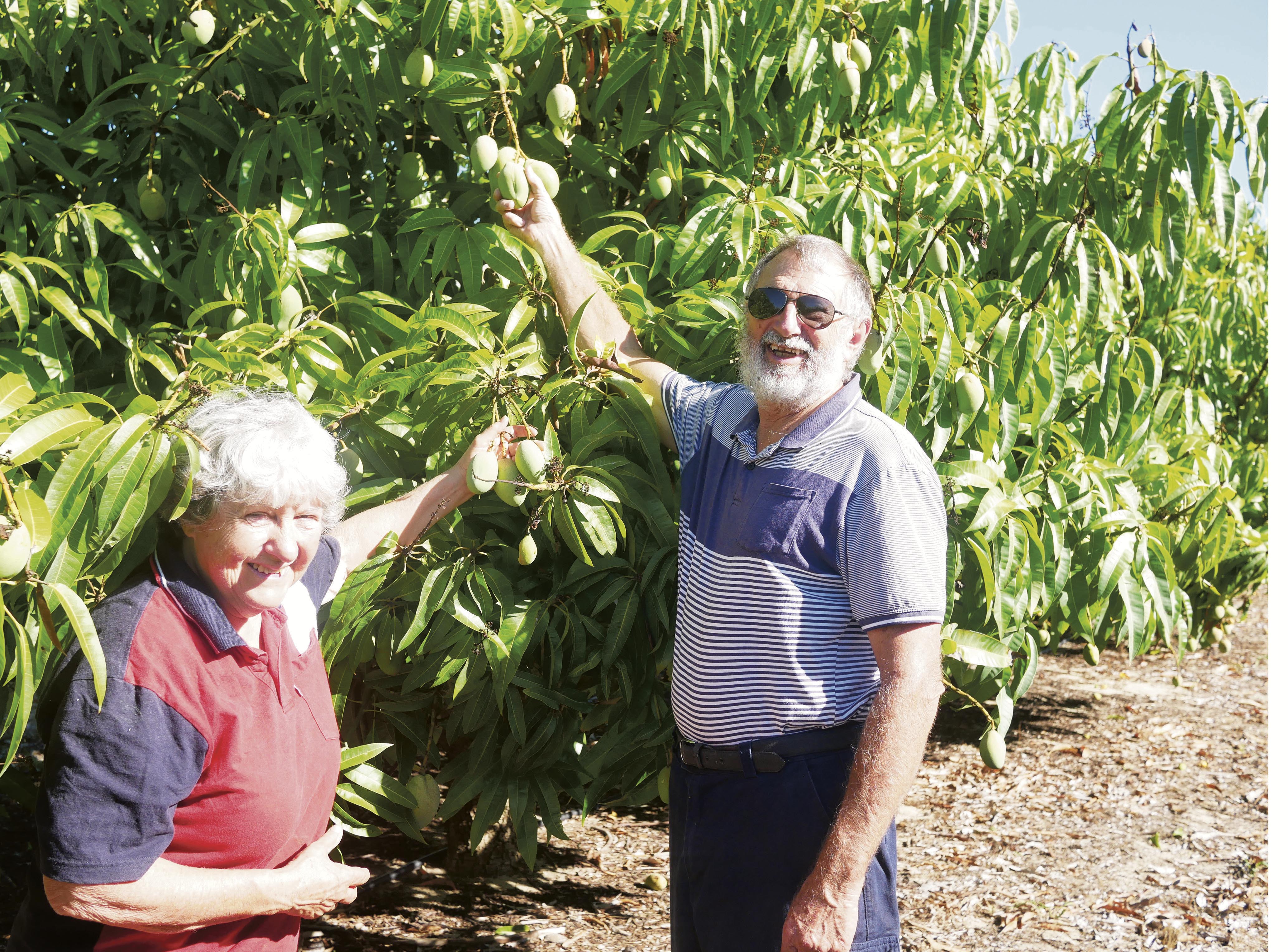Finessing the art of mango farming has been a challenging yet rewarding project for aviation enthusiast John Reymond and wife Jill Wilson. The couple bought their 80ha property in Karakin, 15 km east of Lancelin, 20 years ago. “Essentially, we bought an airstrip,” says John, “It was bigger than we intended, so we thought we’d better become farmers!”
While venturing into agriculture was breaking new ground for former mechanic John, Jill’s background as an agricultural scientist with the WA Department of Agriculture came in handy when they ‘retired’ to the farm – although she admits theory is not always straightforward in the field.
The biggest hurdle for the couple, and for many mango growers in our ‘Southern’ region is overcoming plant disease. After all, mangoes are native to the tropics and the young trees must adapt to our sub-tropical climate. “In the north, they have the insect problem that we fortunately don’t have, though some orchards have experienced occasional disease problem,” says John. Wind, and oddly enough, foxes, are also a problem. “They scratch at low hanging mangoes to see they are ripe enough to eat, ruining the fruit!” explains Jill.
The lack of locally relevant information at hand 15 years ago, when they planted their 2000 young trees, was one of the main reasons Jill helped form the Southern Mango Growers group, SMANGO. With Tony Maddern of Avalon Orchards as President and Jill as Secretary, the 25-strong group now meets regularly to discuss growing issues as well as try to market their product better.
Although the timing of mangoes grown in Chittering, Gingin and Dandaragan sits neatly after the flux of fruit from the north over summer, getting the best price in the market is still hard-fought.
After barely picking 400 kilos of fruit during a dismal season last year, John and Jill are anticipating a bumper harvest from the biennial crop in 2018. With help from a team of backpackers they hope to reap around 50,000 kilos when they start picking mid-month. But a bumper harvest doesn’t necessarily mean they’ve hit the jackpot. Stringent rules for uniformity govern the size and shape of fruit sold in supermarkets, curtailing the quantity of fruit accepted as grade 1. Frustrated growers are now turning their efforts towards farm gate sales and the local markets to sell direct to consumers for a better price.
“As growers, mainly we just hope to break even,” John says. Luckily their farming enterprise, JJ’s Farm, which also includes Jill’s breeding flock of White Dorper sheep has other lifestyle benefits.
“This is our project to have lunch together every day,” says Jill. And of course, there’s the added bonus of that airstrip – where John regularly welcomes flying clubs and other amateur pilots who drop in to share stories.
This year local mango lovers can buy their fruit direct from JJ’s Farm at 407 Sappers Rd, as well as from the back of John and Jill’s ute as they join other local growers at the Bindoon Primary School Fete and Mango Festival on 17 March. They are looking forward to sharing their love of mangoes with the local community. “People do love mangoes and we love them too!” says John.








